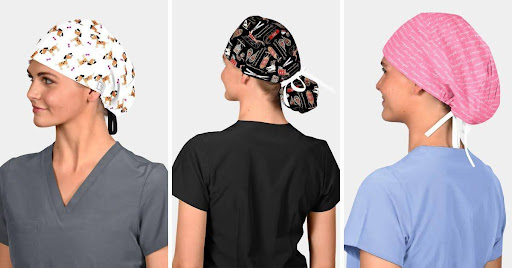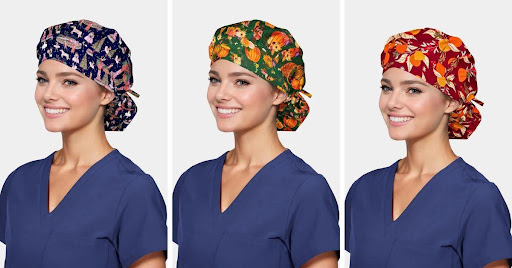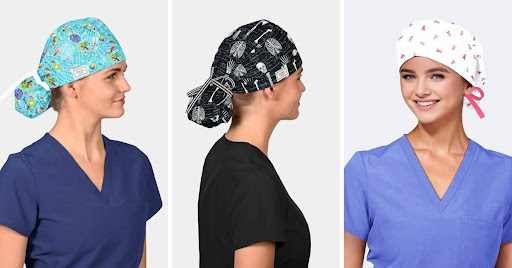Introduction
The nursing cap has always been more than a scrap of fabric — it’s a potent symbol of compassion, dedication, and healing. From the time of Florence Nightingale to today’s healthcare arena, caps have come to represent a level of hard work and respectability that cannot be taught. And as the designs have changed over time, the message behind them has not: being proud of what nurses do.
Nurses everywhere still carry this classic accessory —the perfect blend of tradition and modern trends. For ritual, everyday work, or symbolic nursing caps are reappearing in a really special way. In this post, we’ll look at the top 10 nursing cap designs every nurse wishes for, what each means, and how you can pick the right one that suits your taste and position.
The Legacy of Nursing Caps
Historical Origins and Significance
The origins of the nursing cap go back to the 19th century, when Florence Nightingale established modern nursing. First created to honor the shape of the nun’s habit, early nursing caps were intended to keep hair tidy and suggest purity and service. Each nursing school chose its cap style, le and it became a badge of identification and honor.
As years went by, the cap became a universal symbol of commitment and discipline in medicine. This not only symbolized cleanliness and professionalism, but also the nurse’s ethical obligation to care for and comfort.
Evolution of Nursing Cap Designs
Nursing caps changed from starched, towering structures to softer, more practical adaptations in the mid-20th century. As the practice of medicine was modernized, function took priority over formality. Yet the fond memories of those caps are never forgotten. Nowadays, the resurgence of traditional or modern fashion is once again becoming popular as nurses can wear stylish and fashionable nurse uniforms while carrying out their necessary duties.
Why Nurses Still Love Wearing Caps
A Sense of Identity and Belonging
For some nurses, just the act of wearing a cap evokes sweet memories from nursing school — a nod to the long nights and hard work that forged their path. It builds camaraderie among the nurse team, joining them with shared values and pride in their profession.
Professionalism and Recognition
And in hospitals where caps are optional, many nurses wear them with pride. The cap signifies professionalism, self-control, and trust — attributes that patients perceive and enjoy. It remains a badge of office and experience in clinical settings.

Top 10 Nursing Cap Designs Every Nurse Dreams About
1. Classic White Fold Cap
The traditional white fold cap is still the hallmark of nursing tradition. This design is sleek, sophisticated, and instantly identifiable, making it the perfect addition to any uniform. Constructed from starched cotton or polyester blend, it provides you with all-over stiffness. It remains a popular cap due to its classic beauty, and is still a preference of many nursing schools and certain formal occasions.
2. Vintage Lace-Trimmed Cap
Feminine embellishment trimmed in lace for a touch of sophistication to the classic nursing gown. Frequently made by hand, with an eye for detail, it is a popular option for graduations and other special occasions. The lace is also a symbol of purity and tenderness, which are critical elements in the nursing foundation.
3. Modern Pleated Cap
Contemporary Pleated Caps The modern pleated caps combine classic inspiration with practical design. Crafted of breathable, wrinkle-resistant material and a very lightweight weight, it’s easy to keep up the maintenance on this garment. The pleating provides a rich pattern and texture, while maintaining a professional look for everyday use.
4. Embroidered Logo Cap
Healthcare institutions are experimenting with more customisation. Custom caps are usually embroidered and can also have a hospital or college logo, which creates pride and unity. This is a chance for you to allow nurses to express individuality whilst looking unified in an environment that both undervalues and requires them..
5. Floral Print Cap
Floral print caps are perfect for nurses who like to add some variety and personality. They add a hint of color and whimsy to the plain white outfit. These patterns are especially popular in paediatric and outpatient areas where adding a hint of warmth can help patients feel more comfortable.
6. Satin Ribbon Nursing Cap
Satin ribbon nursing cap. It is normally worn as a graduation or special occasion cap. The ribbon, typically black or blue, represents the completion of training and progression to professional nursing. These caps are cherished by many nurses as souvenirs and a proud shining moment in their life’s work.
7. Foldable Compact Cap
Working Smart is a must today in Health Care. Cornet nursing caps were collapsible for easy carrying and storage by nurses. Great for travel nurses or the nurse who works in multiple locations, these caps combine style with mobility.
8. Disposable Sanitary Cap
The level of hygiene required in medically used rooms, especially in surgery and intensive care units. Disposable nursing caps are constructed with lightweight, breathable non-woven material to maintain sterility. They may not be pretty, but their usefulness and safety have made them a standard element of contemporary medical garb.
9. Cap with Built-in Hair Net
One of the best caps with hair out there is a great combination of function and comfort for nurses who have long/thick hair. They hold your hair back firmly, so that it’s secure and comfortable for long hours at work. Surgeons and lab personnel particularly prefer this style!
10. Personalized Color-Banded Cap
Caps with color bands provide visual contrast and aesthetic style. Rank, department, and specialty are among the common indicators of colored bands that help distinguish roles in big hospitals. For instance, blue straps can mean registered nurse, and green is for surgical personnel. The soft splash of color adds organization and aesthetic value.
Choosing the Perfect Nursing Cap for You

Based on Face and Head Shape
A cap should not only look professional but also be comfortable. Caps with higher folds add symmetry to nurses and midwives with round faces. Smaller faces might like rounder or pleated styles that soften features. Source: comfort is very important — a cap just right helps you keep the focus and self-assurance through the shift.
Based on Workplace Regulations
Always check the rules in your school or workplace before choosing a nursing hat. Some hospitals have a specific cap style or color to keep departments uniform. Personalization is great in some cases, but uniformity both maintains professionalism; it’s always good to have adhered to (and eliminated resistance to) the dress code.
Materials and Comfort Factors
Best Fabrics for Breathability and Durability
Nursing caps are usually made of cotton, polyester, and blended fabrics. It also offers great breathability in cotton for long shifts, or wrinkle-resistant and easy-to-clean polyester blends. Some newer styles even feature antimicrobial fibers for added cleanliness and freshness.
Maintenance and Longevity
A nurse cap taken good care of should last you for many years. Hand wash with light detergent, lay flat to dry, or quick tumble dry with little or no heat, and reshape as needed. 2: For ceremonial hats, use spot cleaning or dry cleaning only if necessary. Wearing Instructions: Proper use helps protect both you and your patient, and maintain the crisp, professional image that both nurses and patients expect.
Styling and Personalization Tips
Adding Subtle Details
While nursing hats must always look the part, there are simple things that you could do to them, such as adding small pins or embroidered flowers. To personalize your cover without affecting its formality, many nurses emboss a first name initial, charm,m, or school pin into the design of their cap. This personal-history aspect can make these small gestures repositories of a narrative about devotion and maturation.
Color Coordination with Scrubs
Piggybacking on your scrubs with a nursing hat typically will increase the overall professional appearance. Plain white caps work well with pastel or navy scrubs, and banded caps can coordinate with department-specific clothing. Color psychology is also at play — Pastel tones can be calming, while brighter hues can bring energy and optimism to the workplace.
Nursing Cap Etiquette and Symbolism
When and How to Wear It
In the past, nursing caps were worn for duty at all times. But recent hospitals have evolved more practical principles. These days , most nurses save their caps for graduation, photographs, and special occasions. This sense of respect ought somehow to be evident even while wearing the garment, whoever, wherever, and whenever it’s worn..
The Meaning Behind Nursing Cap Stripes
Your nursing cap stripes are symbolic to you. Traditionally, a single stripe was used to denote a nursing student, and two stripes were for a registered nurse. This tradition is still observed today by some schools and hospitals as a recognition of training levels and completion. Put this way, it’s a small but powerful form of progress celebration and professional pride.
Trending Innovations in Nursing Caps (2025 Edition)
Eco-Friendly and Sustainable Designs
Nursing Cap Sustainability is a hot topic worldwide, and now many healthcare apparel companies sell environmentally friendly nursing caps made of organic cotton, bamboo fiber, or recycled polyester. These caps are comfortable, and in addition, reflect that we have environmental responsibility, a value cherished by the healthcare systems today.
Smart and Functional Nursing Caps
The newest thing in medical attire is ”smart fabrics.” (The novelty of nursing caps with moisture-wicking, antimicrobial, UV-protection properties is just taking off. Some even feature adjustable straps and provide an ergonomic fit for long hours. Nursing caps have had a modern update with more functionality and performance-driven designs.

Where to Buy the Best Nursing Caps
Trusted Online Retailers
Quality nursing caps are relatively simple to find today, as there are many specialty uniform suppliers, as well as online stores that offer a full range of choices in their inventory. Most websites will have detailed size charts, customer feedback, and customisation. Make sure the online store you shop from specializes in medical apparel so that these clothes will be durable and authentic.
Custom and Handmade Options
For the lover of fine workmanship, handmade nursing caps are a delightful option. A lot of indie designers have a bespoke option with special trims or embroidery. Supporting small businesses makes your items more unique and is ethical within the community of medical fashion.
Caring for Your Nursing Cap Collection
Cleaning and Preservation
Regular cleaning maintains the sheen of nursing caps. Elastic waist with drawstring design, you never need to tie your drawstring again. Ideal for transitional temperature, perfect for casual wear, home or traveling; You can wear with a pair of sneakers and a gym t-shirt as well✨ Please separate the whites from the colored clothing when you wash…for whiter whites, use non-chlorine bleach! Iron on low heat as needed and keep stored in a clean, dry place. Caps crafted from lace or other fragile fabrics should be hand-washed and air-dried to preserve the texture and shape.
Displaying or Storing Collectible Caps
Several nurses value their caps as mementos. If you’ve saved caps throughout your career or time in school, framing them or building a memory display is an excellent option. You can use shadow boxes, glass domes, or fabric cases to preserve their beauty and significance for generations to come.
Conclusion
The nursing cap continues to be a timeless emblem of dedication, caring, and professionalism. While healthcare uniforms have changed over time, the cap represented a tradition that remains important to the nursing culture. Every design — from the timeless white hanky fold to the personalized color-banded racism ones — encompasses a mix of tradition, pride, and practicality.
Whether proudly worn every day or kept as a memento, the nursing cap is a reminder to students of their journey and dedication to care and serves as an inspiration to all nurses in their profession. But as their looks change with the times, one thing doesn’t: The nurses who wear them have always merited our continued respect.

